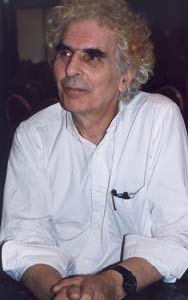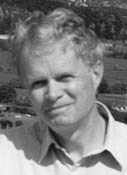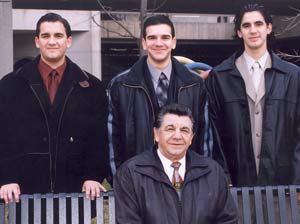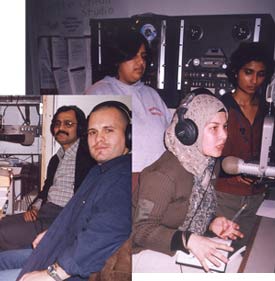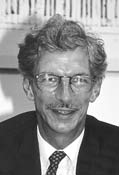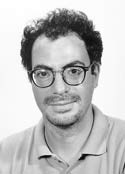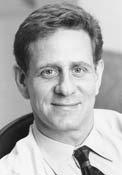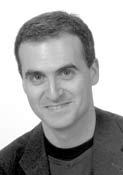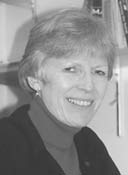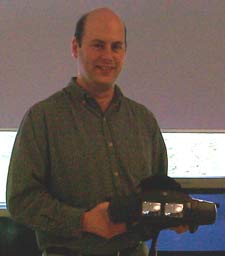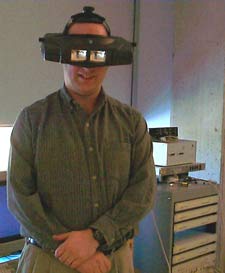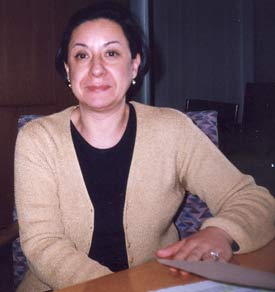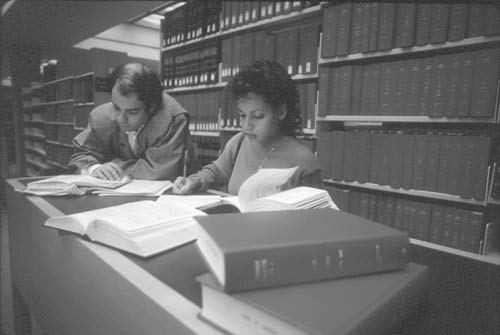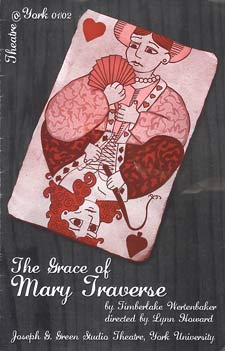|
|||||||||||||||||||||||||||||
|
|
|||||||||||||||||||||||||||||
| | |
| | VOLUME 32, NUMBER 11 | WEDNESDAY, FEBRUARY 6, 2002 | ISSN 1199-5246 | |
| | |||
|
 |
By Paul Delaney It is the simple things that can be the most perplexing. We take for granted so much these days from an astronomical perspective. The Sun rises in the east (more or less) and sets in the west (more or less) daily. We realise that it is not the Sun however, that is moving per se to account for this rising and setting rather the Earth's rotation about its axis. This obvious state of affairs has not always been so obvious and unfortunately is not completely appreciated by everyone even today. Similarly, to an observer on the Earth, the Moon exhibits a series of differing phases over the course of a month. Specifically, if you carefully note the position of the Moon with respect to the background stars and then wait for the Moon to return to that exact same position, 27 days, 7 hours, and 43 minutes will elapse. This is termed the Moon's sidereal period. (This is also the time it takes for the Moon to rotate once upon its axis allowing us to see only ever one face of the Moon's surface). However, if the phase of the Moon at the beginning of your observation was, say, a full moon, it will take 29 days, 12 hours, and 44 minutes for a full moon to be visible again. This period is called the synodic period or lunar month, and represents the time interval between any two consecutive and identical lunar phases. (The difference between the sidereal and synodic periods arises from the Earth's motion about the Sun. A stationary Earth, one that did not orbit about the Sun, would experience identical lengths for the sidereal and synodic periods of the Moon and indeed our own planet.) We did discuss the notion of time a couple of issues ago ... time to check out the archives! Quick question then: can you experience two full moons (or indeed two of any specific lunar phase) in a given calendar month? It is the synodic period of the Moon which is of importance in this question. The calendar date each month of a full moon occurs a little earlier with each passing month. So, for example, if a full moon occurs on April 10th, the next full moon will occur 29 days, 12 hours and 44 minutes later, on May 9. As most months have 30 or 31 days, it is theoretically possible to have two full moons in any month. It is not possible in February, of course, even in a leap year. (It is possible though, for February to not have a full moon at all, the only month that can have such an occurrence. I should look up when such an event will next occur, a great trivia question!) While you are out checking the sky, you may well notice that the stars are not radiating a steady light. They are "twinkling" or more specifically, scintillation is occurring. No, the stars are not varying their light output that rapidly (although many of the stars you see at night are in fact variables in terms of their energy output). The physical phenomenon you are witnessing is very local: the Earth's atmosphere is affecting the way you receive the light from the stars. As the photons of light from the star, a thin arrow of energy, pass from the vacuum of space into the Earth's atmosphere, they experience refraction. The changing density of the medium through which the photons are moving causes the arrow to change direction, albeit very slightly, As the arrow penetrates deeper into the atmosphere, it passes through layers of air that keep changing their composition and thus the level of refraction keeps altering. Net effect is that to an observer on the ground, it appears that this arrow of light is sometimes visible, sometimes not: twinkling or scintillation. The denser the air through which the arrow passes and the more variable is the air's composition, the greater is the twinkling. Hence, stars lower to the horizon seem to twinkle more. York University's Astronomical Observatory continues its public viewing evenings every Wednesday commencing at 6pm. The observatory is located on the main campus (corner of Steeles and Keele) at the Petrie Science Building. Slide and video presentations accompany the observing. When the Moon is visible you are invited to bring your own 35 mm camera and try your hand at lunar photography through the 40 cm telescope. For more information concerning the observatory, please phone the information line at 416-736-2100, ext. 77773. Paul Delaney is senior lecturer in the Department Physics and Astronomy at York University and master of Bethune College.
| ||
|
 |
The Sport Hall of Fame honours individuals who have significantly contributed to Yorkıs interuniversity sport program as athletes, coaches, and administrators, and who have exemplified the spirit and ideals of York University sports in professional or community life. Five individuals will be inducted into the Sport Hall of Fame on May 30, 2002. Any member of the York Community including Alumni, students, faculty and staff can nominate an individual. Additional information and nomination forms are available by calling 416-736-5982 or by visiting the Sport York Web site at www.sport.yorku.ca .
| ||
|
|
An interview with York's brown-bag monarch By Cathy Carlyle 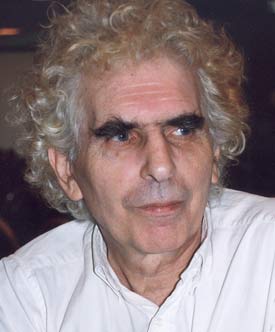
Luigi Bianchi When people at York hear "brown bag" they think "Luigi Bianchi". On York's Keele campus he is the uncrowned monarch of brown bag talks, the affable professor who has organized the weekly Brownbag Research Seminars for the past eight years. He introduces all presenters with the same consideration and genuine interest, whether they are PhD students, colleagues or researchers from abroad. Bianchi, professor in Atkinson's School of Analytic Studies & Information Technology, will be retiring ("not my choice") at the end of this academic year, but he intends to continue organizing his trademark seminars. He found time to reflect on the series. Q: Why did you want to organize a brownbag seminar series? A: Professor Jan Sapp, who is no longer at York, unfortunately, and I in the Department of Science and Technology organized it. We had all been going through one of those endless, frustrating periods when you waste your time cutting whatever can be cut, and academic life seems to be reduced to an administrative exercise. So I asked myself, "Shouldn't we remember that we are a university, a place where things come together, where people share ideas, debate and help and support each other's research?" It wasn't just an ethical question, it was a hedonistic one: instead of just meeting to cut programs, shouldn't we also meet for pleasure? I thought that brown bag seminars initially only for our department just might be a model and inexpensive antidote to this administrative deforestation. Q: Obviously the series expanded beyond your department. To what do you credit its success? A: Yes, it grew and now we have speakers from all over the University as well as other neighbouring institutions. The series became successful for several reasons. For instance, more than one speaker has said to me, "This is the place where my paper took shape. The atmosphere is friendly, and people are genuinely interested and constructively critical." And it is also a safe venue where graduate students can gain experience and exposure. There are times when we have a low turnout because people have to teach or attend classes, but generally we have around two dozen people. A couple of times we had to squeeze in more than a 100 people! Q: Do most topics at the seminars have a science flavour? A: The theme is "science and technology" because the roots of the seminars are there. But this is a very broad area. It ranges from science itself to the history, philosophy and sociology of science and beyond. I have also tried to encourage various people to talk about science policy. It is an important field where science, government and society speak to each other. Q: Where do you find your wide range of speakers? A: At first they were from our department. Then people from other areas on the campus came to listen and sometimes I asked if they would like to present a topic. One person leads to another and before you know it, you have a sort of network. Or I may be reading an interesting paper, and it is simply a question of calling the author to see if he or she would like to speak at the seminars. I admit that, at first, I had to do a lot of arm-twisting to get names. Now I have enough people lined up for several years. Some even write and ask to give a talk! Q: You say that you started the seminars in the days of cost-cutting, something we currently face. The series is free to the listeners, but does it still cost nothing to run?
A: Not anymore. When I invite graduate students from other institutions, I strongly believe we should give them at least a small honorarium. And of course when speakers are from out of town, we must at least refund their expenses. I also try to coordinate with other universities nearby, so that we can share the expenses for speakers giving lectures in more than one place. Our little budget is made up of contributions coming from a few sources: the dean, the master, the student association in Atkinson, the VP academic and the York University Bookstore. Q: Many faculty and students have the impression that all seminars are bear-pit sessions. What would you say to those people? A: The Brownbag Research Seminars are not like that. There is a kind of friendliness at our talks, and presenters have often commented on it. I've even had letters from some of them saying how delighted and surprised they were with the friendly, inquiring and cooperative atmosphere. Q: Are there any changes planned for the series? A: The main change will be our location. The School of Analytical Studies and Information Technology is going to move into the new TEL Building in 2003, where we will have a state-of-the-art conference room. We hope the technical problems we sometimes experience now the projector or computer refusing to function will become things of the past. Q: Is there anything else you would like to add? A: I guess I am happy to have had the opportunity to contribute to the academic life of York. A university is indeed a place where people come together to share, discuss and develop ideas. And especially nowadays, when so much time is spent struggling with shrinking budgets and administrative complexities, it is essential to do all we can to nurture the spirit of inquiry. You can find the listings and abstracts of upcoming seminars at www.yorku.ca/sasit/brownbag/
| ||
|
|
Glendon honours two recent recipients of teaching excellence awards by Marika Kemeny 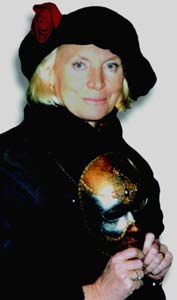
Christine Klein-Lataud The new year was ushered in with "Glendon style" when two Glendon College professors, recently honoured with Glendon Teaching Excellence Awards, gave public lectures relating to their fields of specialization. Professor Christine Klein-Lataud, a faculty member of the School of Translation, and Professor Ian Gentles, who teaches in the History Department, treated the 40 or so members of the audience composed of faculty, staff and students to illustrations of their erudition and sparkling wit. The host of the evening, Glendon Principal Ken McRoberts cited passages from the thick file of letters supporting their nominations. Those for Klein-Lataud testified to her invaluable contribution to the success of the School of Translation, to her great knowledge and enthusiasm for teaching. They stated that she pushed her students to the limits of their abilities and achievements. In her charming and amusing lecture, Klein-Lataud used Tintin, the world-famous cartoon character, to illustrate translation pitfalls and challenges. Some brilliant examples of transferring meaning and context to another language without slavishly translating the words themselves, offered humorous insights into her field of specialization. Not only did Klein-Lataud master the intricacies of a PowerPoint presentation for this occasion, but provided a great deal of information an accurate reflection of the way in which she conducts her classes. The comments made in the letters supporting Gentles' nomination bore a striking resemblance to some of those about Klein-Lataud, demonstrating what students and colleagues define as an outstanding professor. Of particular note was the remark that he pushed his students to their intellectual limits, resulting in achievements they had previously considered beyond their reach, and instilled in his students a striving for excellence, which they carried with them beyond the classroom. Students declared that Gentles made a profound difference in their studies, that they considered him their mentor, guiding them to self-discovery and the love of learning. Colleagues and students alike judged him to be an all-around humanist, well versed in history, literature, music and the arts.
Ian Gentles In his lecture, Gentles explored the topic, "Teaching and Research: Is there a Connection?". For support, he quoted from serious as well as amusing sources. He juxtaposed Henry Adams' statement that "...a teacher affects infinity one can never know where his effect will stop..." with G.B. Shaw's quip that "he who can, does, he who cannot, teaches...". Gentles pointed out that a good teacher must "love his subject with transparent passion", and must also "love his students as individuals, even though they may not be particularly gifted or interested in his subject". The challenge then is to awaken that interest against the odds.As for the teaching ethics to which Ian Gentles subscribes, he stated that teachers must fulfill their contractual obligations by always turning up for class and by treating students as fairly and impartially as it is humanly possible. He pointed out that this meant not pre-judging them, which was not always easy. Finally, he drew the connection between teaching and research, explaining that they should overlap and cross-pollinate, thereby enhancing both fields. Marika Kemeny is the public relations and communications advisor for Glendon College
| ||
|
|
A family devoted to York!
George Seretis and his family are great fans of York. George is a volunteer on the executive committee of the York Business and Professional Alliance and Chair of the York University parents' committee. As well, he and his family established an endowed bursary at the University in his family's name. Even the bench on which George is seated is connected with his family and is now part of the University. The Seretis family donated the bench, located near the Scott Library, in memory of George's parents. Their links to York stretch even further because his three sons attend York. Pictured from left are: Andy, first-year BBA at Schulich School of Business; Nick, fourth-year BAS at Atkinson Faculty of Liberal and Professional Studies; and Spiros, second-year BSc.
| ||
|
|
Kaleidoscope celebrates three years of worldly radio talk at York
Shown during a show on teaching international development studies, are (from left to right) Sonia Benjamin, program manager; guest Sara Latha-Elliot; and assistant program manager Namrata Kanchan.
Three years ago this week, Ismael Musah, a history student from Ghana, clicked on a microphone in the CHRY studio and launched Kaleidoscope, a biweekly radio talk show about international issues at York.
Musah had persuaded the organizers of International Development Week to support such a radio show. The name says it all. Kaleidoscope explores a colourful, changing global mix of people and ideas on international issues that affect York.
This year's host Jeff Pringle, a fourth-year student in International Studies and Economics, has discussed everything from stereotypes and discrimination to art/music as protest and notions of progress with faculty and student guests, Canadian and foreign alike. After he talks to guests, he opens the lines to callers. Some shows, like the ones on the lack of international coverage in campus media and on refugees among us, have sparked editorial responses and fundraising campaigns.
Program manager Sonia Benjamin makes it clear that Kaleidoscope's programs may be international in scope but aim to engage more than the 2,800 international students at York.
"The show is for students on international issues not an international student show," says Benjamin, a third-year political science student, who started as a reporter last year.
Kaleidoscope aims to educate and inform. If Benjamin is proof, then it is working. A recent landed immigrant from India, she says: "I am amazed at the sheer diversity at York. I have learned more at York via Kaleidoscope than I would have otherwise. This has certainly broadened my perspective."
To celebrate its third anniversary, Kaleidoscope aired two shows on development before International Development Week. The one-hour programs focused on teaching international development and religious fundamentalism, topics set well in advance during the annual brainstorming session in August.
"We don't want to repeat ourselves," says Benjamin. "We want to explore new topics and push buttons we haven't pushed before."
Benjamin and assistant program manager Namrata Kanchan, a fourth-year English and communications student from India, receive stipends from the International Student Internship Program and the Work Study Program administered by the Office of Student Affairs. The rest host, reporters, marketing and design coordinators, advisers are volunteers.
Kaleidoscope airs every second Friday from September to April. Reporters research topics and line up guests, who may or may not be from York. When they need help finding someone who can speak intelligently on any given topic, they often turn to York International's Roopa Desai-Trilokekar, who has a wealth of international alumni contacts. Reporters have been known to arrange telephone interviews with people in Pakistan in the middle of the night.
In three years, the show has doubled in length to 60 minutes and its crew has tripled to 15. Not everyone is directly involved in programming. Some are designing brochures to boost Kaleidoscope's profile on campus and build a larger audience. Most listeners hear about shows through word of mouth. "We're a niche show looking for a niche audience," says Desai-Trilokekar, one of two Kaleidoscope advisers.
Kaleidoscope's reach, like its content, may well expand. Designers are also working on a Web site with Web-cast capabilities. If program tapes or Web casts are available, professors might be able to use them in their classes. "We keep in mind that a lot of Canadians are very much part of the international community," says Desai-Trilokekar. "We make it a point to take account of Canadians as players."
| ||
|
|
The Journal
AN ONLINE PUBLISHER that offers its science journals free on the Internet plans to begin asking authors to pay a $500 fee to have their articles published. The publisher, BioMed Central, says it hopes colleges will pick up the tab to have their professors' work published in freely-accessible online forums.
chronicle.com/free/2001/12/2001122101t.htm
* * *
A GLANCE AT the fall/winter issue of New Labor Forum: "The rise and fall of working-class culture". Paul Buhle, a professor of labour history at Brown University, traces the history of working-class culture in the US from its earliest days to the present.
Since the early 19th century, he writes, workers of many different ethnicities founded social clubs. The clubs provided recreation, political forums, and places for immigrants to speak their native languages.
Labour and socialist newspapers also spoke to the working class. A number of labour writers and artists got their start in such papers as The Masses. Labour-themed music and theatre also got wide play among workers.
But things soon changed for the descendants of 19th-century working-class immigrants. With immigration restricted in the early 20th century, and with the progeny of immigrants becoming assimilated, the members of the working class began to aspire to the middle class. This was especially pronounced after World War II, when a house in the suburbs and two cars became the American dream. Add to this the increasing aloofness of labour leaders, and Buhle concludes that working-class culture is for the most part gutted. Thus, he suggests that workers try to create a new culture of labour, whatever that may be.
The article is not available online, but information about the journal can be found at
www.qc.edu/newlaborforum
.
* * *
AMERICAN WOMEN EARNED MORE COLLEGE DEGREES, graduate and undergraduate combined, than their male counterparts in 1999-2000, but men earned more doctorates, according to a report issued by the US Department of Education. The report also found that 20 per cent of all bachelor's degrees awarded were in business management and administrative services, more than in any other discipline. Education led the way at the master's level, accounting for 27 per cent of all degrees conferred.
chronicle.com/daily/2001/12/2001122003n.htm
* * *
THE US NATIONAL ENDOWMENT FOR THE ARTS announced recently that it would block a $42,000 grant to the Maine College of Art for an exhibition involving, among other pieces, a wall drawing made of peanut butter and a seven-foot-tall mound of flour topped with a barking mechanical dog. The arts agency also cleared a grant for a production of a Tony Kushner play about Afghanistan. Both grants had won the NEA's preliminary approval before being blocked by its acting chairman.
chronicle.com/daily/2001/12/2001122004n.htm
* * *
CHALLENGING DARWIN: Advocates of "intelligent design" theory say an "external agent" directed biological evolution. Most scientists view the idea as religion cloaked in academic jargon. chronicle.com/free/v48/i17/17a00801.htm Intelligent-design advocates say Darwinian theory cannot account for the existence of "irreducibly complex" cells.
chronicle.com/weekly/v48/i17/17a01001.htm
| ||
|
|
New Canada Research Chairs and more for York
Five new Canada Research Chairs awarded this past November at York University support a bridging of disciplines that will speed up scientific advancement in the study of pain and human consciousness, make Canada a recognized leader in the study of citizenship, provide new input to cultural policy in Canada and expand the study of plant virus genomics for commercial exploitation. An additional new research Chair funded by two national health foundations delves into health services and women's health issues.
The federal government's Canada Research Chairs program supports cutting-edge research at Canadian universities and is intended to help secure Canada's competitive position in the 21st century. The Canada Foundation for Innovation provides infrastructure funding for the research.
Christopher Innes
Christopher Innes, FRSC and distinguished research professor, is one of the top international scholars in the field of drama studies, specializing in 20th century British and American theatre. His Directors in Perspective series in 17 volumes with more to come, documents the work of key theatre directors and develops theory to measure their work. It has made the study of directing and its 20th century history standard elements of the curriculum of theatre departments, both in England and throughout North America. His book Avant Garde Theatre (1993) provided the first critical overview of that important 20th century movement. His Canadian Dramatists series began with the first book-length study of a contemporary Canadian playwright in Politics and the Playwright: George Ryga (1986), opening up this branch of Canadian literature to academic study and providing the necessary critical infrastructure for Canadian studies, which up to then focused almost exclusively on Canadian novels or poetry.
Of all the arts, theatre is the most directly related to society, and live performance with its unrivaled immediacy makes it a powerful educational and political tool and a prime site for cultural research. But development of the field has been inhibited by a gap between scholarship (history, criticism, theory) and practice.
As Chair in Performance and Culture, Innes will help redress that gap, facilitating cooperative research not only in English and theatre, but also visual arts, design and film, communication and media studies, education, sociology and anthropology. He will coordinate a multi-faceted research program to establish a basis for the interconnections between theatre, culture and society; to analyze the ways in which performance can contribute to an understanding of social history and behaviour; and to demonstrate the practical value of the performing arts to society as a whole.
A crucial part of the program is the collection and archiving of a database of digitalized images for educational theory and performance analysis that will be accessible to scholars across Canada. The program will also establish working models for integrating scholarship and practice in performance arts, providing a more sophisticated basis for drama research and potentially redefining the discipline. The results will provide new input to cultural policy in Canada and around the world.
Engin Isin
Engin Isin is a leader in the emerging field of citizenship studies, which seeks to capture the changing nature of citizenship in the 21st century.
In the last two decades of the 20th century, postmodernization and globalization have challenged the nation-state as the sole source of authority over citizenship and democracy. The reality of immigration and emigration, the formation of such supranational bodies as the European Union, the formation of new successor states (such as Azerbaijan, Moldova, Lithuania, Croatia, Macedonia and Slovenia), the movement of refugee populations, and the codification of international human rights norms has prompted increasing recognition of citizenship as a transnational matter. The increasing importance of cities in organizing and shaping cultural, social, symbolic and economic flows has also prompted a recognition of their role in fostering citizenship.
Isin's work advances the idea that citizenship is not only an abstract legal concept but also a transnational social practice that unfolds primarily through the city. But while negotiations for citizenship now take place above and below the state, laws are still enacted at the state level. Canada, whose multicultural approach to citizenship is based on the principle of cultural recognition, has a significant role to play in influencing and shaping policy in other countries as regards citizenship laws. The questions that face the Canadian experiment as a civic nation, now face states that originally imagined themselves to be ethnically homogenous such as France, Germany and Japan.
Isin, who has focused primarily on the occidental experience of citizenship, will now look at the oriental experience as viewed through the prism of the Ottoman city. In the process, he will coalesce the study of citizenship that is currently underway across the social sciences and humanities and begin to shape the international research agenda, channeling these energies into a renewed focus on social justice in an age of globalization.
Joel Katz
Joel Katz has set the research agenda internationally in pre-emptive pain relief and phantom-limb pain. His study with R. Melzack in the journal Pain in 1990 provided the first detailed description of pain that persists after amputation.
He found that the very act of cutting tissue during surgery leads to more intense post-operative pain for up to three days, even though patients have received a general anesthetic during surgery and don't experience surgical pain in an awake state. Post-surgical pain and the need for post-operative analgesic medications decreased if patients received potent analgesics before surgery. Katz's studies have had a major impact on the clinical practice of anesthesia and the understanding of acute post-operative pain.
At York, he will lead a team of researchers in psychology and kinesiology and health sciences toward achieving "painless surgery" and developing preventive approaches and treatments for chronic pain. He also aims to research pain management in terminally ill patients and in infants undergoing surgery, as well as the role of gender in effective pain prevention and management.
Evan Thompson
The philosophical works of Evan Thompson build a bridge between the sciences and the liberal arts that is an essential link to our understanding of the nature and function of human consciousness. He was one of the first philosophers to introduce the "embodied" approach in the science of human mental processes known as cognitive science, and to address the relationship between scientific theorizing about the mind and human lived experience. He argues that cognitive processes such as recognizing a face are embodied in the whole human organism and exist in the social and physical environment, and cannot be understood in isolation of these.
His book, The Embodied Mind: Cognitive Science and Human Experience (MIT Press, 1991), co-authored with neuroscientist Francisco Varela and cognitive psychologist Eleanor Rosch, presents the embodied and dynamical systems approach to cognition, and is a standard reference in the field. It contains one of the few discussions of the relationship between cognitive science and Buddhist philosophy. Thompson argues that philosophical analyses of consciousness need to be incorporated into cognitive science and analytic philosophy in order to move beyond the so-called "explanatory gap" between accounts of the mind and accounts of the brain.
His research has implications for understanding the role played by empathy in child development and education, the practice of psychotherapy, understanding of the illness experience, and the physician-patient relationship. An international collaboration linking the fields of philosophy, psychology, and cognitive neuroscience, Thompson's research will draw on expertise at York already recognized internationally, in the theory and history of psychology, and in the Centre for Vision Research, which brings together faculty from the disciplines of psychology, biology, kinesiology and health science, philosophy, and computer science.
K. Andrew White
K. Andrew White has made important contributions to international research on plant viruses.
Collectively, plant viruses are responsible for billions of dollars annually in crop losses worldwide. Focusing on the economically-important tomato bushy stunt virus or TBSV, White's laboratory has made significant discoveries related to viral processes at the molecular level and to virus genome structure and function. These results not only add to the fundamental understanding of the reproductive cycle of this type of virus, they also provide important insights for the development of anti-viral strategies.
Other work in his laboratory has shown the TBSV can be engineered genetically into a viral vector for the production, in plants, of commercially-important protein pharmaceuticals for example components used in experimental HIV vaccines.
White will continue his current molecular and structural studies on TBSV and plans to expand his research program to include plant virus genomics. This latter work will be a collaboration with leading plant virologists in Canada and a government agricultural research laboratory. The plan is to survey, discover and genetically characterize previously unknown plant viruses with the goal of identifying useful new viral properties that can be exploited commercially.
Pat Armstrong
Sociologist Pat Armstrong is helping to shape the debate over health care reform in Canada. In study after study, she has sounded the alarm over creeping privatization, the erosion of universal health care and nursing shortages. Armstrong speaks with authority on health care policy, especially as it affects women as workers and as patients.
She chairs a national working group on health care reform and is a partner at York's National Network on Environments and Women's Health, for which she has produced studies on the health care reform in Ontario and on the impact of restructuring in long-term care. She has chaired York's Sociology Department and directed Canadian and women's studies programs at Carleton University and Vanier College in Montreal.
As CHSRF/CIHR Chair, she is expected to educate and mentor students in her area of expertise. She will develop a graduate program to train students in health policy and politics, emphasizing women's issues, with input from the Canadian Federation of Nurses Unions and the Women's Health Bureau at Health Canada on applied health services and policy research issues.
For a full list of York CRCs, visit the Web site of the Vice-President research & innovation at
www.yorku.ca/vpri/crc/yorks_crc.htm
.
Susan Bigelow is media relations coordinator, faculties and research at York University.
| ||
|
|
Michael Baptista Essay Prize given to York students
Frank F. Scherer, York PhD candidate in social and political thought, was given the annual graduate Michael Baptista Essay Prize this week for his essay entitled "Chinese Shadows: Fernando Ortiz on Race and Cubanity". His paper was praised for "the originality of its perspective" and its "intellectual scope and scholarly risk-taking". Undergraduate prize winner was Megan Rivers-Moore for her essay, "The Myth of Racial Equality: Contesting the Discourse of National Identity in Cuba", a work said to capture the "complex and contradictory inclusiveness of Cuban nationalism". Each winner was presented with $500 from Sharon Baptista, widow of Michael Baptista for whom the prize is named. The prize was established by friends of Michael Baptista and the Royal Bank of Canada in recognition of factors central to Baptista's spirit and success. York's Centre for Research on Latin America & the Caribbean (CERLAC) and York International co-administer the prize program.
| ||
|
|
Making virtual reality less virtual
Robert Allison
Allison's area of interest is the integration of stereoscopic vision within the VR world. Traditionally, the effects of creating a computerized reality have been hampered by improperly aligned or distorted images. Human vision uses many cues to perceive depth, including motion parallax, which refers to the fact that when you move your head objects located at different distances appear to move by different amounts and speeds (such as seen from a moving vehicle). In VR systems only a subset of these cues are presented. The missing cues can create problems with depth perception, ultimately interfering with the perceived "reality" of VR.
Allison's new equipment includes a VR helmet with some interesting changes from previous models.
"Optically it's well designed," explained Allison. "There are two features that we don't have in our other helmets: the first thing is that it's very high resolution. Each of the screens has the same resolution as a typical monitor, which for a helmet is very high. For many applications of VR you want a nice, big display, so you feel that you're immersed in the world, but you don't want to see the pixels. The other feature is that it has a see-through display, so you can superimpose the real world on the virtual one."
The application of the transparent screens is for "augmented reality", a kind of hybrid between a real space and a computerized one. This can relate to wearable computers, so that potential future uses would be in museum or city tours. The technology allows wearers to simultaneously look at what is in front of them and a commentary on it. A more mundane application would be a use by repair personnel. Using augmented reality, someone could very quickly get to a problem and then bring up blueprints or other data useful to solve the problem.
"There's basically two ways of mixing real and virtual information," said Allison. "One is to use a see-through helmet like this. The other way takes a video image of the outside world and mixes it with a computer-generated image to make a combined image that you can present in a traditional helmet." While the transparent-screen helmet has a superior picture of the real world, one disadvantage is that when you move your head there is a slight time lag between the real picture and the computer-generated one. The human perceptual apparatus is very sensitive to relative inaccuracies within a given environment. In fact, a few milliseconds difference is very noticeable.
With a combined video and computer-generated picture, it is possible to match the two images so that this small but perceptible difference does not exist. Both stereopsis studies and the concern with perceptible time lag will lead to a virtual environment that is better matched to our senses.
The eventual technologies coming from studies such as Allison's are far-reaching. In part, his findings will evaluate the superiority of a see-through screen versus an opaque one for use in augmented reality. The results will also be informative on the basic biological functions that are used in the perception of generated realities, which leads to a more general analysis of how biological and machine systems can interrelate. This ties into the psychological issues of problem-solving: the application of data learned in a true three-dimensional environment applied to a created one, or the taking of contradictory data and attempting to resolve it.
Derek Irwin is a master's student in English and writer in York University's SPARK (Students Promoting Awareness of Research Knowledge) program. The program was initiated by NSERC (the Natural Sciences and Engineering Research Council of Canada) in 1999, based on a model developed at the University of Guelph
| ||
|
|
Argentina in crisis: the crying continues
Viviana Patroni
Crowds rioting for food, the middle class protesting against banking restrictions and, most shocking of all, poor fighting poor York's Viviana Patroni witnessed it all during a recent visit to Argentina. Wanting to present an analysis of what she had seen, she gave a seminar at the University entitled "Argentina: A Crisis Foretold".
Patroni, director of CERLAC (Centre for Research in Latin America and the Caribbean), reviewed the political climate which led to the current crisis in the country, laying much of the blame at the feet of neoliberalism and saying that past governments have ignored the unfolding calamity since the mid-1970s.
Some of the early neoliberal policies government attempts at privatization and an anti-inflationary policy based on currency over-evaluation "resulted in foreign indebtedness that produced a crisis in 1982," said Patroni. Inflation continued to plague Argentina, "eating up a considerable chunk of real salaries" in the late 1980s and early 1990s.
In 1991 the government imposed the Convertibility Law through which one fixed exchange rate was set so the peso was at parity with the American dollar. "This was a successful move in one way: it abated the problem of inflation. On the other hand, it presented some serious shortcomings," said Patroni.
She said as the decade advanced the peso became increasingly overvalued so that imports began to displace national industries and there was a large drop in exports. "In short, there was a very large trade deficit."
Correspondingly, there was the country's dependence on external financing, which eventually led to an increase in the country's foreign debt and wariness among bond investors. The only way the country could secure the placement of new bonds was by paying extremely high premiums.
Speculators were the "winners" throughout, said Patroni, since they could borrow in international markets at lower rates than if they invested their money within the country. "People borrowed abroad, invested in Argentina's financial market and took the money out.
Finally, the IMF (International Monetary Fund) put together several rescue packages so Argentina could continue to pay the interest on its loans. Argentina staggered along, carrying the burden of its burgeoning foreign debt. Between 1991 and 1999 the public debt increased to approximately US$155 billion from US$58.5 billion.
In the early days the Convertibility Law produced some economic growth, according to Patroni, thanks to the inflow of foreign currency. However, a downside emerged by 1996: unemployment and underemployment among the lower and some of the middle income earners. At the same time, the top earners saw a 26 per cent rise in income. "Today more than 40 per cent of Argentinians live under the poverty line, compared to 5.8 per cent in 1974."
Social unrest ensued, she said. Protestors began to speak out against the government and its controls, making their wishes known through marches, absenteeism at voting time, even though voting is compulsory in Argentina, and spoiled ballots.
By 1998 a combination of the above factors, including widespread poverty and very high levels of foreign indebtedness, pushed Argentina into recession. "Powerful economic groups then tried to reduce payments for taxes and wages, further deepening the recession," said Patroni. She pointed out that major corporations, however, such as those in the petroleum industry, had been exempt from paying taxes all along.
Still, capital continued to fly out of the country until the government intervened to limit bank withdrawals to US$1,000 and sharply cut state salaries and state pensions. Thousands of people protested by joining marches and, in some cases, looting supermarkets.
"Why did the government impose such limits? To try and prevent the collapse of the banking system. It was actually the banks that pushed for those controls. But the reduction in the availability of cash had a very negative impact on the economy. There was a social explosion instead," explained Patroni.
In short succession several presidents came and were ousted until the arrival of Eduardo Duhalde, a politician who at first appeared critical to neoliberalism. Although he devalued the peso to the US dollar, he is attempting to appease agitators (from mainly the middle class) who are irate at the banking controls, said Patroni.
So far he has eased some restrictions on how much money Argentinians can move from dollar savings accounts to peso accounts. However, citizens are still unable to cash cheques and the banks will no longer give out US dollars. In fury, many have tried to destroy the banks by throwing bricks and burning them down.
Patroni said a completely new economic plan is needed to address the escalating problems of unemployment and poverty. She feels Brazil could play a key role in Argentina's ongoing battle to recover.
| ||
|
|
York Perspectives
...hard at work in the Law Library a scene familiar in all York libraries, which in total house just under six million books, print periodicals, theses, archival materials, microforms, maps, films and video collections.
| ||
|
|
Actors portray pull of power in graceful Mary Traverse
design by Randal Boutilier
Theatre@York's second production this year, The Grace of Mary Traverse, may be cloaked in 18th century London but it unbuttons issues that still grip modern females. Issues of power not exclusively male and oppression, freedom and responsibility.
Plays about big ideas are not easy. Luckily, in Timberlake Wertenbaker's lively and modern script, the audience can grasp the parallels easily. And student director Lynn Howard made sure we got the message and were entertained at the same time during the two-act production in January at the Joseph G. Green Studio Theatre.
Set in 1780, the play was written in 1985 while Margaret Thatcher was in power in Britain and Wertenbaker doesn't shy from evidence that power and its abuse is gender neutral.
We cheer at first with young Mary Traverse's Faustian decision to abandon her bourgeois cage and venture into the world on the other side of her window pane, never to return. When the unusually educated and articulate girl, (played by a self-possessed Megan Murphy) accompanied by her guide and maid Mrs. Temptwell (played with frosty resentment by Grace Kung), descends into the masculine worlds of gambling and illicit sex, we see the negative consequences of her insistence on equality. Mary loses her fortune in a card game and ends up a prostitute, also impoverishing Mrs. Temptwell and street friend Sophie (Sarah Foord). After a series of misadventures in the name of self-discovery, she gains only cynicism until she tastes power, the power to do good (or so she thinks) and a chance to redeem herself. Intending good, she incites the poor masses against their rich oppressors only to watch in horror as fire erupts and innocents are hanged, as happened in the Gordon Riots of 1780.
"Typically we see men in plays having these huge epic journeys," said Howard in an interview. "I was interested in a woman venturing into the world in search of herself, who wants to experience the world." Mary, never satisfied, exploits others as much as they exploit her. In the end, Mary sees hope and redemption in motherhood. This play is an important "cry for justice," says Howard.
"It's a hard, hard play to do because it's about big ideas," said Howard. "It's very challenging for young actors.... They have to go through enormous changes and growth."
The fourth-year acting students did it with ease and grace in this fast-paced, multi-scened drama. Murphy as Mary starts as a chattering, awkward young girl trying to perfect her feminine daintiness. She slips into her true nature argumentative, bossy, curious, questioning without guile. We in the audience, used to this kind of ingenuousness from girls, are more entertained and surprised by the artificiality of her dandified father, played with posed archness by Christopher Lindsay, and the shallow abusive, notoriety-chasing Lord Gordon, played with smirking slipperiness by Ryan Giesen. The men represent different types of power patriarchal, physical and political, as presented by manipulative Mr. Manners, played with sinister control by Craig Burnatowski. The victimized poor excite the most sympathy the passive Sophie and especially her young man, Brandon Thomas's noble, gullible, mute Jack.
As designed by Diane Jenkins, the women's period dresses swished with presence but couldn't compete with the flourishes and folds of the men's emerald and orange satin and velvet coats trimmed with glitter. Even the drab brown shawls of the comicly stooped and shuffling old women played by Dejan Zahirovic and Nadia Foster who changed the props between scenes showed to advantage against textured limestone-grey backdrops. Lighting, though too dim and pervasive sometimes, was used to pink effect as the fire raged. And music, Howard's own touch, neatly framed the play and suggested the past and present as a wandering violinist playing Schubert's Adagio first in period then in modern dress.
Be sure to see Theatre@York's annual festival of original student theatrical concoctions, playGround, from Feb. 5 to 8.
And book now for Theatre@York's final play of this season, Princess Ivona by Witold Gombrowicz. This black comedy set in a dysfunctional royal court where the young but homely Ivona becomes the object of a prince's antics and the butt of jokes. It is directed by Paul Lampert and runs March 19-23.
Both will be staged at the Joseph G. Green Studio Theatre on the Keele campus.
| ||
|
|
|||
|
|
|
| Current Issue | Previous Month | Past Issues | Rate Card | Contact Information | Search |
|


